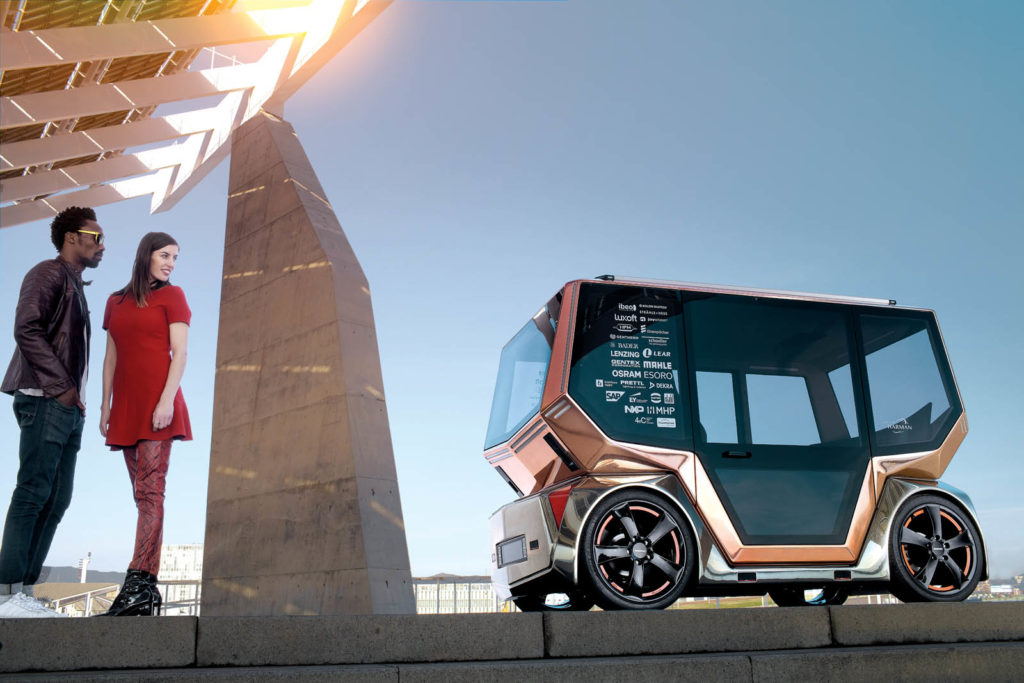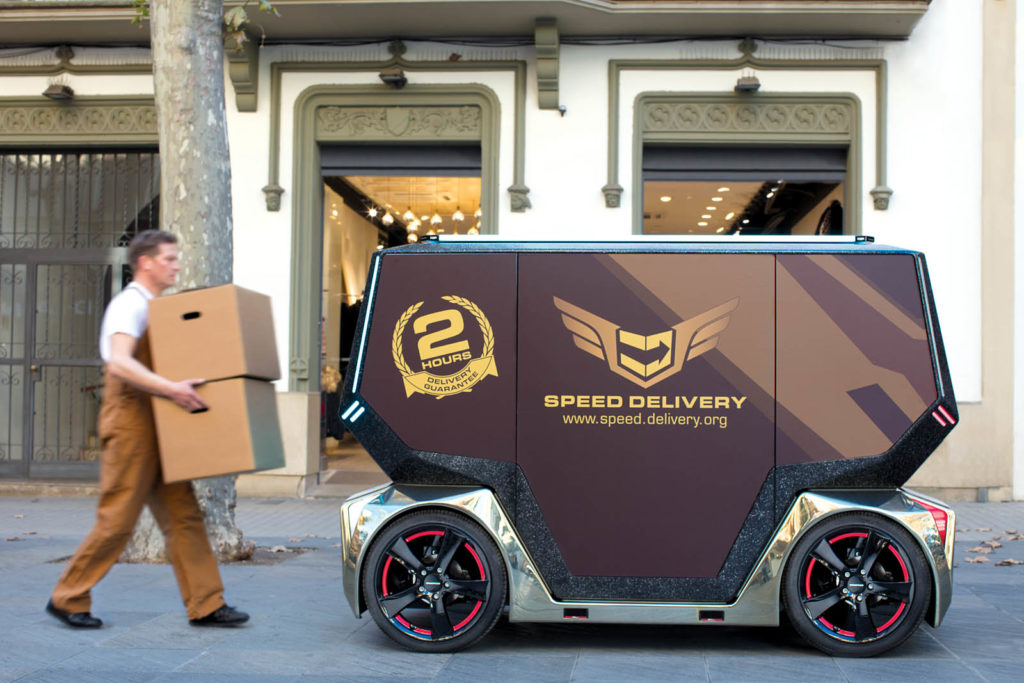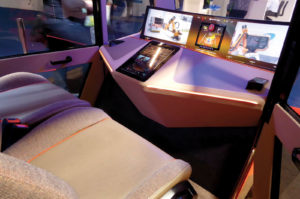Sustainability and biodiversity will be key to livable cities, with new technologies leading the way.
by Marie O’Mahony
According to the World Bank, city dwellers accounted for more than half the world’s total population in 2007, while the United Nations (UN) warns that by the middle of this century they will account for two-thirds of the population. In May, the UN (through the Intergovernmental Science-Policy Platform on Biodiversity and Ecosystem Services) released a summary of its forthcoming Global Assessment Report on Biodiversity and Ecosystem Services, presenting a stark picture of the impact of urban living on the environment as well as on people. With a mass exodus back to rural living highly unlikely, what should the cities of the future look like, and how can advanced, technical and smart materials make a positive contribution to that future?
With many of the leading textile industry innovators exhibiting at Techtextil, Messe Frankfurt, just days after the report summary was published, it provided an ideal opportunity to gain some global perspective. All signs seem to indicate that mobility, in all its forms, is key.

“Economic exchange contributes to aggregate economic development, yet often is negotiated between actors and institutions of unequal power, which influences the distribution of benefits and long-term impacts.” –UN Global Assessment Report
There has been a steadily growing demand for people and organizations that consume and benefit financially from goods to assume a more equitable share of the environmental cost of production, consumption, reuse and disposal of those goods. When additive manufacturing first emerged, there was considerable excitement that it would lead to consumers being able to order online and then print the product without having to leave home, eliminating the need for shipping. While 3D printing is thriving, it has not always been in the ways imagined in the early years, and home printing on demand has not happened so far.
Automotive adjustments
The Schoeller Spinning Group, headquartered in Austria, exhibited the latest Rinspeed microSNAP concept car at its Techtextil booth this year. Swiss-based Rinspeed AG created a design that addresses sustainability within the vehicle’s construction as well as in its envisaged use as a delivery service vehicle. The chassis and body of the car can be joined and separated autonomously, so a chassis subject to faster wear and tear can be repaired and updated with reduced cost and waste. For the occupants, the microSNAP seating concept allows for personalized climate control: Smart sensors deploy patented air-moving devices, high-power density heaters and convective heaters. Active cooling and passive air-moving devices address the human body’s thermal asymmetry, and thermoelectrics located in the seat backs (along with a passive air-moving device in the cushion) help to maintain balanced climate control.
For the car’s interior, Schoeller has developed a fiber that mixes alpaca and jet-dyed polyester; the alpaca is used undyed but sorted by natural tones of white, beige and anthracite. Lenzing™, also based in Austria, produces “green” fabrics as a replacement for the leather or synthetic fibers on interior trims, using fibers such as Tencel™ Lyocell and Modal derived from renewable raw material wood sources. Modal fibers have embedded color pigment introduced during the production process, reducing the environmental impact of dyeing.
The overall concept of the microSNAP looks to a world that is already integrated and identifies novel sustainable ways to increase on-demand, personalized and autonomous mobility. It could also be part of an intelligent supply chain to increase parcel volume for “last mile delivery,” using smart climate control to ensure that hot food arrives hot and chilled and frozen foods are at the correct temperatures, all within one package. The concept car is no longer simply a car: It’s part of a much larger mobility ecosystem that needs to be in place for smart cities, the people who live in them and the natural environment to thrive together.
“In the past 50 years, the human population has doubled, the global economy has grown nearly four-fold and global trade has grown ten-fold, together driving up the demands for energy and materials.”
–UN Global Assessment Report
The transportation industry is already making considerable progress improving energy efficiencies and materials through vehicles themselves, as well as in the design of transportation systems. A German start-up, Lilium, is developing a five-seater electric jet as a public air taxi service capable of taking passengers from New York’s JFK airport to Manhattan in six minutes—for the same cost as a yellow cab. The vehicles will be powered by 36 electric engines and be capable of speeds of 300 km/hour.
Frank Stephenson, head of product design at Lilium, has worked with some of the great names of the car industry, such as BMW, Ferrari, Maserati and McLaren. Designed to take off and land vertically, the electric jet will travel horizontally between destinations through designated “corridors”—a requirement that highlights the need to engage with multiple stakeholders and the resulting complexity. What is acceptable to air traffic regulators in Europe may be different in North America. But with Morgan Stanley estimating the air taxi market to be worth $1.5 trillion a year by 2040, there is a compelling financial and environmental incentive to overcome obstacles to acceptance.

Material advantages
Composites lie at the heart of the new generation of electric vehicles, but industry experts now realize that being lightweight is no longer enough—materials must also demonstrate their sustainable credentials. Belgium-based BIO4SELF is utilizing biobased thermotropic liquid crystalline polymers (bio-LCP) with the goal of producing a fully biobased high-performance composite. The European Community (EC)-funded project reads like a “Who’s Who” of the European technical textile and composites industry, with fifteen partners including Centexbel, the Institute of Textile Technology at RWTH Aachen University and the Fraunhofer Institute for Chemical Technology.
The composite is manufactured by combining a low-melting polylactic acid (PLA) fiber with a high-tenacity PLA fiber that has a higher melting point and reinforcement provided by bio-LCP nanofibrils to enhance strong mechanical properties. The ultimate objective is to develop a composite that is “self-functionalizing.” Photocatalytic fibers could induce self-cleaning capabilities; bespoke microcapsules could provide the ability for self-healing; and deformation-detecting fibers could allow for self-sensing. The longevity of such a material, and any product made from it, would be exceptional, paving the way for the next generation of composites in which sustainability is a given.
“Nature-based solutions can be cost-effective for meeting the Sustainable Development Goals in cities, which are crucial for global sustainability.”
–UN Global Assessment Report
Sir Colin Buchanan’s report “Traffic in Towns,” commissioned by the U.K. government in 1963, remains one of the most influential planning documents of the last century. Among the proposals contained in the report is the suggestion for “multilevel designs” to allow city dwellers to live “at peace with the motor car.” The post-WWII Hungarian architect Erno Goldfinger was a leading proponent of high-rise living, undertaking Greater London Council commissions such as the design of Balfron Tower, completed the same year that the report was published. The structure’s service utilities and recreational areas were separated from dwelling areas by color-coded “streets” leading to the main tower.
By the end of the 20th century, such brutalist tower blocks (and Balfron in particular) had become what the Financial Times describes as a “visual shorthand for urban deprivation.” The UN report stresses the environmental, social and economic benefit of a green infrastructure approach to urban planning, advocating “retrofitting green and blue infrastructure, such as creating and maintaining green spaces and biodiversity-friendly water bodies, urban agriculture, rooftop gardens and expanded and accessible vegetation cover in existing urban and peri-urban areas and new developments.”
The transformative impact of living roofs and urban agriculture is clearly demonstrated through projects such as the Ford Rouge Factory Living Roof in Dearborn, Mich., and the High Line in New York City. Both developments created economic, social and environmental advantages that have encouraged the development of an industry. Knowledge of local climate, nature and community is essential; architectural design firms like Atlantic Star Design, for example, are focused on regional projects close to their base in Savannah, Ga. Headed by Stella Ruth Matthews, RLA, the group’s philosophy is centered around preserving ecology and seeking the best ways to harmonize the built environment with the earth’s natural processes.
Mobility and transportation are firmly embedded in urban life, but there is a shift in the way that city planners, architects, landscape architects, automotive companies and textile manufacturers are thinking about the issue. Advancing technologies have an opportunity to make a real difference in an urban world, and the next decade will be crucial.
Marie O’Mahony is a visiting professor at the Royal College of Art in London, an industry consultant and the author of several books on advanced and smart textiles published by Thames and Hudson. Visit www.linkedin.com/in/marie-o-mahony-94776836.
 TEXTILES.ORG
TEXTILES.ORG



